The Wand Chooses the Wizard: Insights Into Changing Careers to Deepen Personal Fulfillment Ebook
© 2024 Bonnett Chandler, MA, LPCC,
Richard Chandler, MA, LPC, Kelly Krueger, MA, LMFT
By Kirk Lamb, Ph.d. Licensed Psychologist & Photographer © 2003 - 2019 Kirk Lamb, Ph.D, St. Cloud, MN
Please note: We are supportive and respectful of transgender people. We do not endorse statements made by JK Rowling.
- Richard Chandler, MA, LPC
Harry Potter's Legacy

As would-be wizard Harry Potter¹ was shopping for his first magic wand, the wise old wand maker lectured, “. . . each wand has a core of a powerful magic substance, Mr. Potter. We use unicorn hairs, phoenix tail feathers, and the heartstrings of dragons. No two wands are the same, just as no two unicorns, dragons or phoenixes are the same. And, of course, you will never get such good results with another wizard’s wand.” (p. 84).
Then, when just the right wand found its way into young Harry’s hand, warming his fingers and emanating beautiful sparks, the old man muttered, “Well, well, well . . . how curious. . . how very curious. . .” (p. 85). He went on to tell about the powerful legacy connecting this wand to Harry. “It so happens that the phoenix whose tail feather is in your wand gave another feather—just one other. It is very curious indeed that you should be destined for this wand when its brother--why its brother gave you that scar.” (p. 85) At this point, the reader realizes that this wand is connected both to the murder of Harry’s parents, to his own close call with death, and to his destiny. The wandmaker then cautioned, “ The wand chooses the wizard, remember . . .” (p. 85).
¹Harry Potter & The Sorcerer’s Stone
by J. K. Rawlings, Scholastic, Inc., publisher, 1997.
Now, what might this have to do with careers? Well, lately I have been thinking that one’s work can be thought of in much the same way the old man spoke about Harry’s wand. For it seems to me that when one’s work is fulfilling over time, it becomes a way one makes magic in the world. It is a well-fitted wand, so to speak.
Further, I have noticed that the life stories of those most rewarded by their work often reveal that their work chose them about as much as they chose it. This has been especially evident in my conversations with successful career changers. From these individuals, I have heard repeatedly about what seemed like a magnetic force that pulled them in the direction of their new work.
They seemed to be guided toward it by an internal compass connected to their origins, to legacies absorbed up through their roots. These usually were the legacies of their childhood enthusiasms, passions, and talents, as well as family sagas, both tragic and triumphant, that cascaded down the generations touching the lives of all below.
Ruth Anderson’s Legacies... A Wand Is Found, Then Lost
The year was 1931. Ruth Anderson had been well known for her talents in high school art classes. Her teacher had enthusiastically promoted her pursuit of art school upon graduation. Though a painfully shy person, Ruth had begun to accept this validation and imagine a career in art.
However, her hopes were soon dealt with two fatal blows. First, her art teacher mentor was killed in an auto accident during her senior year. Then, she learned her father would soon perish, and with him the family’s income.
Humbled with terminal cancer, Henning Anderson thanked and then praised his firstborn, Ruth, for her selfless generosity. In their turbulent eighteen years together, he had never affirmed her like this, first a month ago in a thank you letter, and now, to her face. Her ingrained fearfulness and self-doubt were blissfully quieted for just a moment. (To this day, seventy-four years later, the thank you letter her father sent rests in a metal box on a shelf next to her bed.)
During the eight months Henning Anderson lay dying, Ruth had worked every hour she could and had sent home nearly every penny she earned.
Days later, he died as the family gathered near, but not before privately asking Ruth to take care of her weary mother and the other three children. She promised she would. A wand slipped away.
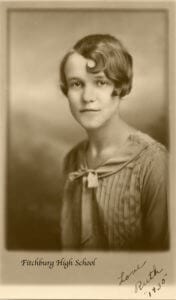
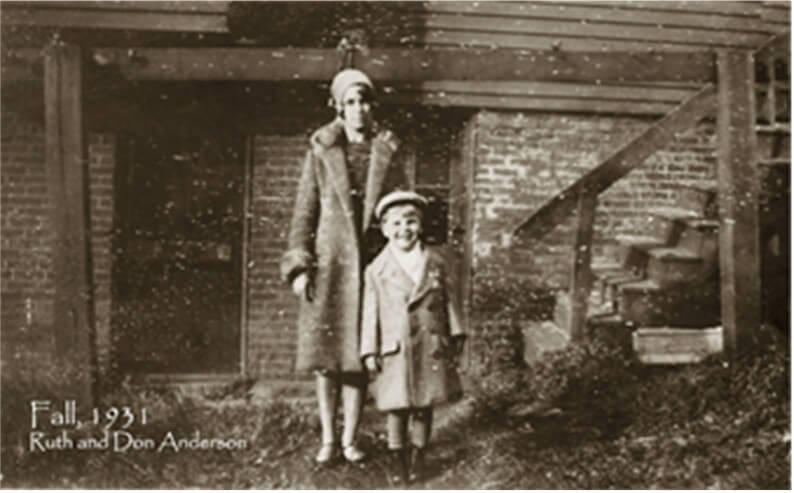
Reclaiming The Wand
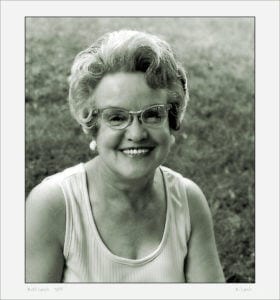
It was now in 1974. Her friend, Pauline, asked Ruth to enroll with her in a community education painting class. Though still shy, Ruth quickly agreed to try it.
Then something happened that captured the imagination of us all. Sixty-something Ruth turned into a fairly accomplished and somewhat prolific painter in oils. Her many paintings (well over one hundred) appeared throughout Massachusetts and New Hampshire, decorating the walls of lake resorts throughout the region and sold amazingly well.
Each one celebrated color and tranquility in landscapes and flowers. Perhaps these were compensations for the gray and stormy years since her father’s death.
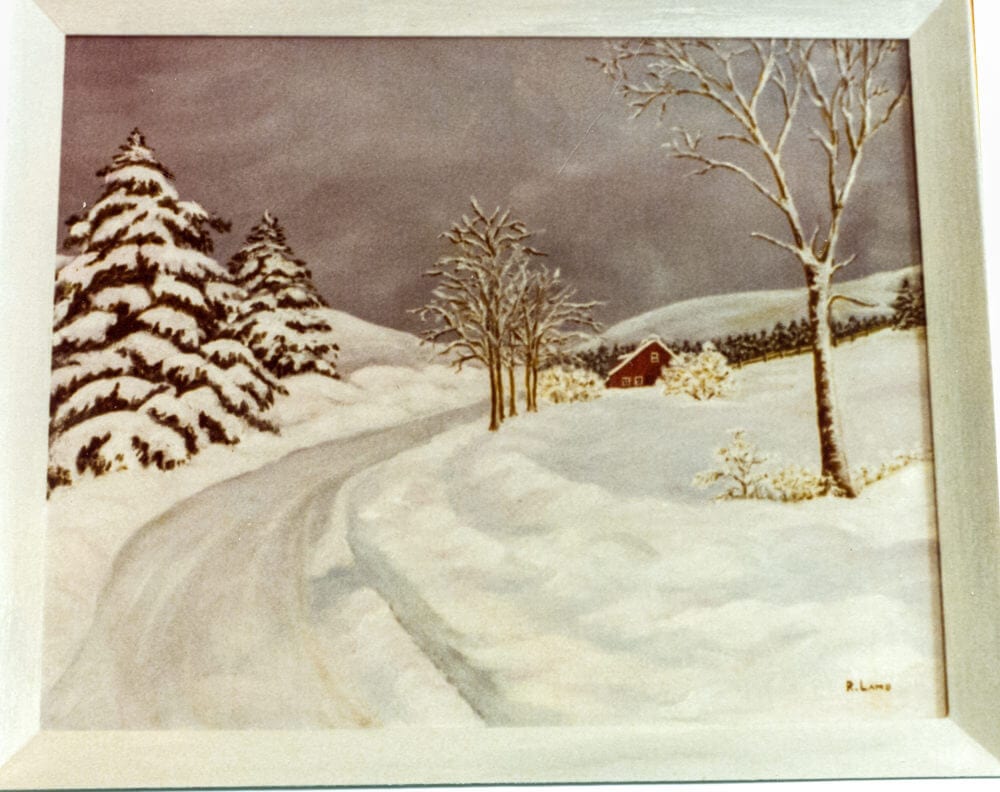
At one point, former movie star Van Johnson bought one of her landscapes and proclaimed her the “Grandma Moses of New Hampshire."
Her artistic career slowed as her eyes gradually failed. Then the painting ended after only eight years.
Ruth’s painting was sustained by a long-buried desire which, on breaking through to the surface, grew with an urgency that knew there was only so much time left in the season.
That the painting ever took place seems a bit miraculous to those who knew her; but, in hindsight, it makes sense. It was like the final blossoming of a long-dormant perennial flower rising from its underground bulb when the right conditions finally arrived.
Ruth Anderson was my mother. Her legacies have touched the ways I think about myself and work. I hadn’t asked her if she ever wondered about the alternative life that might have been, but I am guessing she was satisfied with how things turned out.
I am certain that she did not want me to wait as long as she did to reclaim a lost wand and, with it, a life meant to be lived. This was reflected in her unending validation of the shy artist in me during my childhood and teens.
Later, her personal example of a midlife renaissance galvanized my permission to reclaim the camera as a wand choosing me, just as the role of therapist did until my recent retirement. Her story gave me a view of the possible and a sense of the time remaining.
The Difference Between Ambition & Desire
Ambition
In his deeply personal and poetic guide to fulfillment in work, Crossing the Unknown Sea: A Pilgrimage of Identity, David Whyte likens the search for one’s career to an ocean crossing. He distinguishes between two sources of guidance for such a journey: ambition and desire.
Whyte believes ambition acts something like a beam of light with which you see the territory immediately ahead, but which illuminates only things already known to you. To him, ambition is effective for short-term passages down clear paths. However, he sees it as blunting one’s sense of the miraculous, the possible, and the yet to be known.
Often, in our early adult years, ambition helps us achieve the life that others have defined as valid. Some of the most unhappy people I have met in my career counseling practice of over thirty years have tended to be those primarily guided by what appeared to be ambition. Often, they had been climbing some ladder of success only to find it resting against the wrong wall.
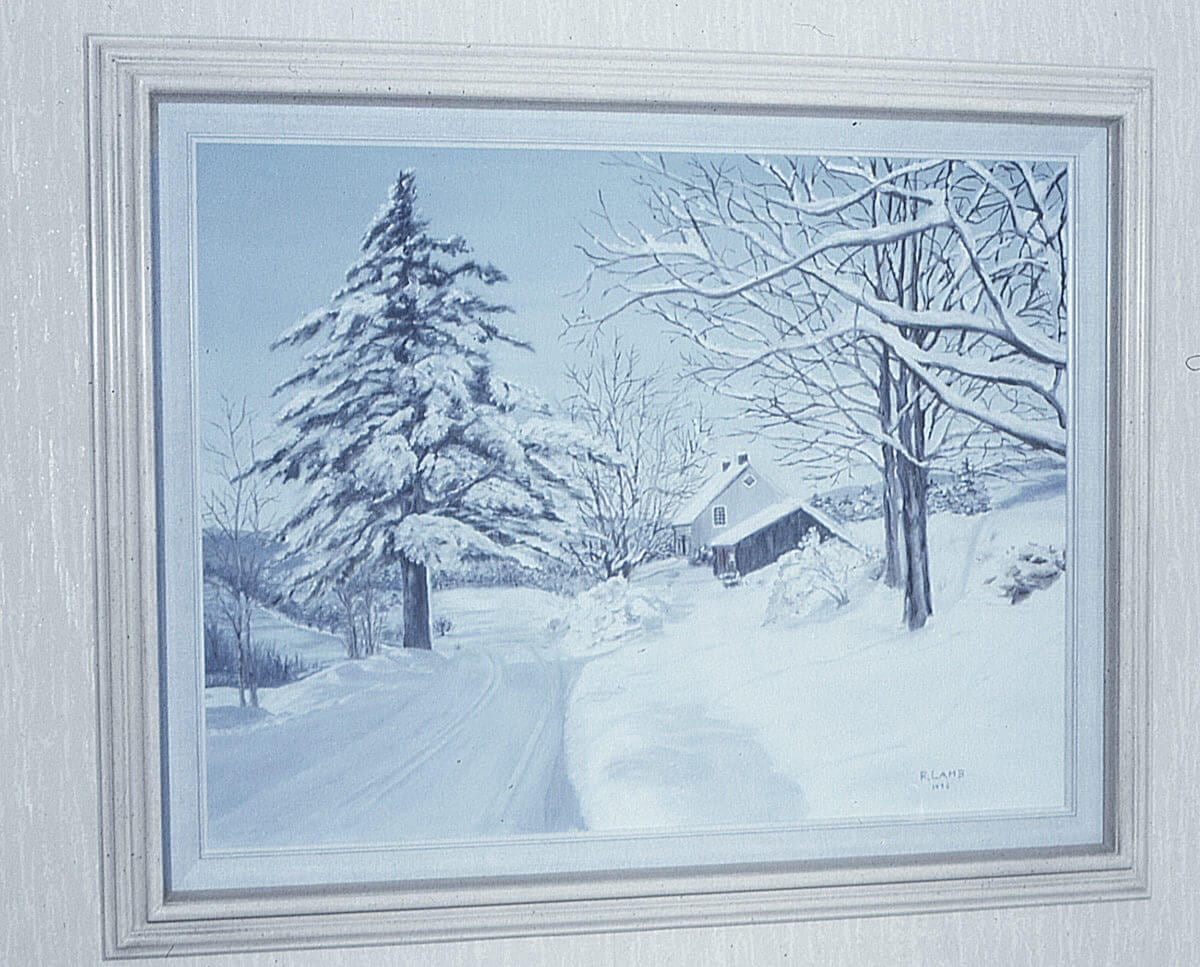
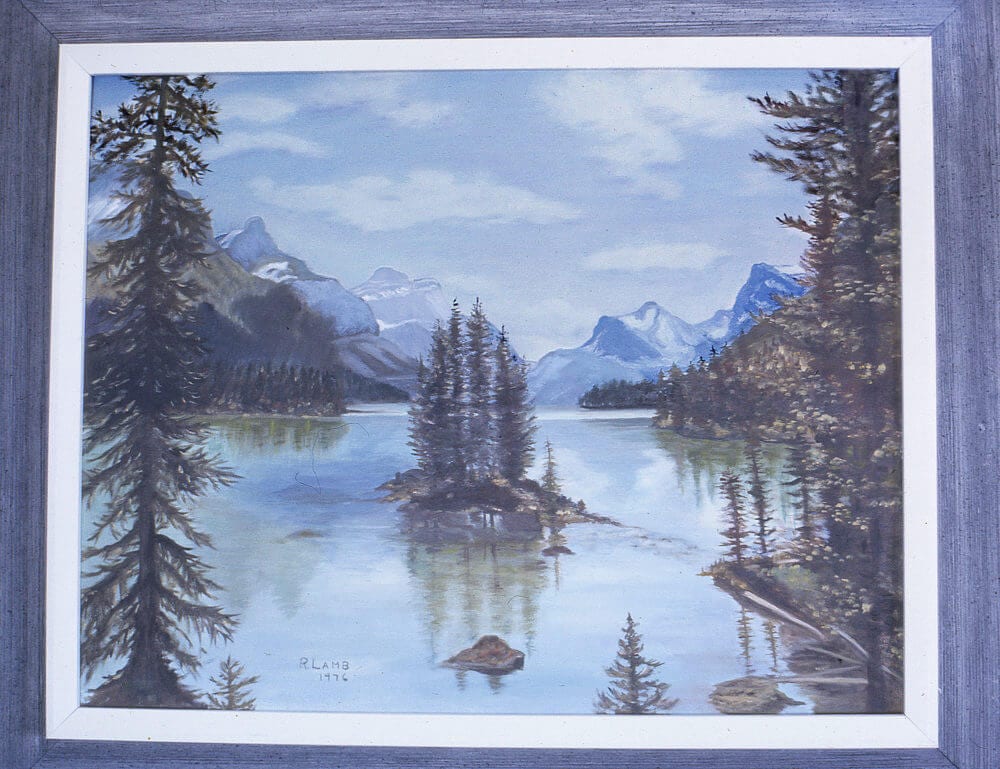
Desire
Whyte contrasts ambition’s focus vs. desire’s vision. Desire, as he defines it, draws more often upon a peripheral vision and even a night vision, both of which are diminished by ambition’s glaring beam.
In the search for work, Whyte sees desire as responsiveness to the gravitational pull which surrounds us while we have an ongoing “conversation between our physical bodies, our work, our imagination, and new territories.” (p. 80). It provides a trustworthy heading when there is no specific path to follow. It is often rooted in childhood “instinctual joys which filled our imaginations and growing bodies and set our enthusiastic course into the world.” (p. 80) Desire grows out of “. . . a connection to the greater story of which we are a part.” (p. 80)
The most fulfilled people I have known have paid closer attention to the pull of desire than the push of ambition. Their connection to desire helped them remain agile when changes in their work situation turned it toxic and required courage, patience or improvisation.
Like many of us, some of these individuals seemed to begin life by choosing work that fulfilled the standards for success set by others; but, unlike many, they shifted somewhere along the way to work discovered with the inner compass of Whyte’s desire.
Examples Are All Around Us
For instance, a former colleague of mine, Nita Jo, recently created a new career for herself as a touring “horse whisperer” trainer and, in so doing, revitalized a connection to her childhood passion for horses.
And then there is Audrey Bacon. This school cafeteria worker drew from the childhood inspiration of her grandmother and became a “magical seamstress” of legendary ingenuity and generosity.
Next, author David Whyte, mentioned earlier, made an agonizing metamorphosis from marine biologist to a poet in his late twenties. Now in his forties, he is a world-renowned corporate consultant and author, has recently been dubbed the poet laureate of the bottom line.
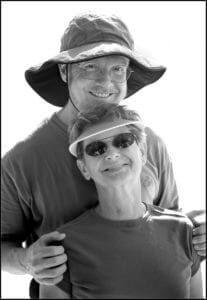
By age thirty-seven, Ed Perkins had risen to project manager in a large and successful construction firm. However, he realized that he had lost touch with his deeply ingrained carpenter self - the part of him that drew him to construction in the first place. By age forty-five, he had built his own, very successful one-man cabinetmaking business.
Similarly, John Jamison, a process engineer in a paper mill, made a transition to the career of forester in his thirties - a vocation he had fully embraced and worked in as a high school student, but had abandoned in college because his friends and family convinced him that engineers made more money and enjoyed more prestige. And then, of course, there is Ruth Anderson.
Some Suggestions For Listening Better To What Might Be Trying To Choose You
Seek Career Change Inspiration From Others
- Do you know or know of anyone who has made such changes in their working lives? Do you know of stories of individuals who pursued new kinds of work to more adequately live a life wanting to be lived? Ask around if you are having a hard time finding such people. There are many out there.
- Consider talking to some of these people about their stories--such people are usually more than willing to share the ideals, ordeals, and deals that gave shape to what they have done and are doing.
- Consider using the informational interviewing methods so fully explained by Richard Bolles in What Color is Your Parachute? or on his website at www.washingtonpost.com, to gain information and inspiration from people who are currently involved in work you have been wondering about but have avoided exploring for practical and all other kinds of reasons.
Take Your Time

Your search may need time for you to sharpen your peripheral vision and let your eyes adjust in the dark until conditions are right. Consider what David Whyte did with wonderful results: he set a goal of doing at least one thing every day for a year, no matter how small it was, to move in the direction of what he desired (to earn a living with poetry).
Things as simple as rehearsing a planned phone conversation, ordering a book, and checking out a website were all a part of what he calls his “conversations” with the new territory through which he was beginning to travel.
Come to terms with your own version of the deafening fears that can stop any of us from hearing what is calling from within. These formidable fears and doubts (and how to move through them) are helpfully discussed by Laurence Boldt in his book, How to Find Work that You Love. He addresses:
- Fear of losing financial or job security
- Fear of being different
- Fear of succeeding or deserving to have work you might love
- Fear of failing
Consult your roots and check what you have absorbed through them Perhaps outline the table of contents of your life story with a detailed tree of your family’s work history on both sides going back several generations. Key in on career changes - both chosen and forced.
Then, do an even more careful recalling of your personal childhood enthusiasms, dreams, successes, accomplishments and triumphs.
Clarify the messages you absorbed from adults around you regarding work and satisfaction. Are you one of the many that were taught to ignore or to never be clear about what you desire?
Find someone whose objectivity and caring you trust and then share your stories with them. Keep the conversations on career reinvention ongoing.
Check Out These Readings for Inspiration & Instruction:
Crossing the Unknown Sea: Work As A Pilgrimage Of Identity, by David Whyte, 2001, Riverhead Books, New York
Let Your Life Speak: Listening To The Voice Of Vocation, by Parker Palmer, 1999, Jossey-Bass Publisher.
How To Find The Work You Love, by Laurence Boldt, 1996, Penguin Books, New York
Repacking Your Bags: Lighten Your Load For The Rest Of Your Life, by Leider and Shapiro, 1995, Berrett-Koehler Publishers, San Francisco
What Color Is Your Parachute? A Practical Manual For Job Hunters and Career Changers, by Richard Bolles, 2003, Ten Speed Press, Palo Alto
